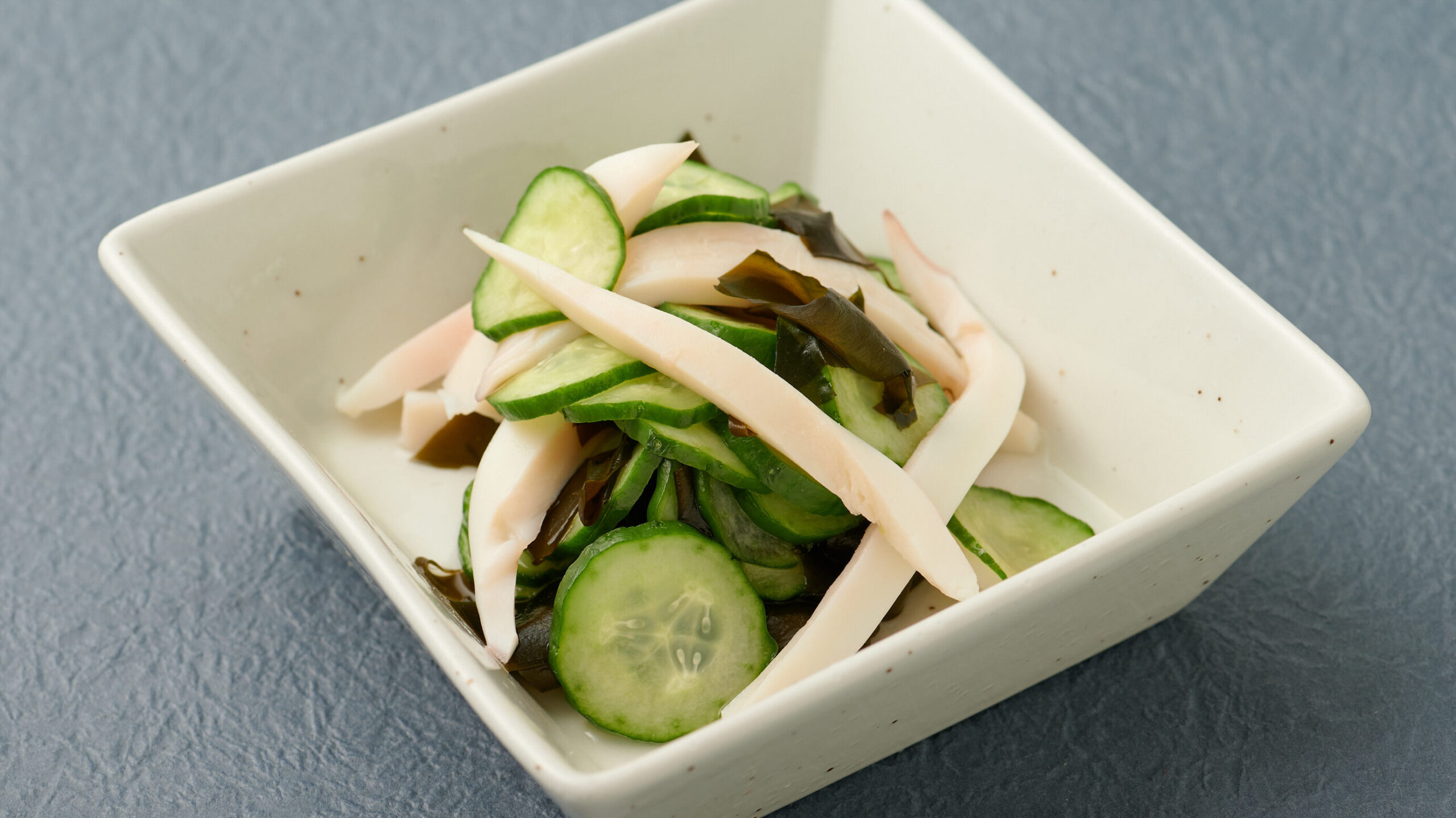
Alright, everyone, let’s discover a refreshing dish from Nagano Prefecture: Shio Ika no Sunomono! Nagano might be landlocked, but they’ve got a clever way of enjoying seafood. This dish features salted squid in a tangy vinegar dressing, and it’s a testament to how resourceful folks can be. Let’s dive in!
Dish Name: Shio Ika no Sunomono / 塩いかの酢の物
- Region / Location: Nagano Prefecture, especially the northern and southern areas.
- Primary Area of Tradition: Northern and Southern Nagano Prefecture (throughout the prefecture).
- Main Ingredients: Squid, cucumber, wakame seaweed, vinegar.
How It’s Eaten / Served
Shio Ika no Sunomono is a simple and refreshing dish. Salted squid is rehydrated (it takes a while to remove the salt!), then combined with cucumber and wakame seaweed in a vinegar-based dressing. The contrast of the chewy squid, crisp cucumber, and the slightly briny wakame with the tangy vinegar is what makes this dish so good.
Cultural Background and Preservation
Since Nagano Prefecture is far from the sea, seafood was processed in coastal areas and transported inland via “salt roads”[cite: 1]. These “salt roads” included routes like the “Chikuni Kaido” (from Itoigawa to Matsumoto and Shiojiri), the “Hokkoku Kaido” (from Naoetsu to Oiwake), another “Hokkoku Kaido” (from Okazaki to Shiojiri), and the “Akiha Kaido” (from Omaezaki to Shiojiri)[cite: 1]. Salted Maru Ika (salt-preserved squid) was a key product brought along these routes[cite: 1]. It was produced as a byproduct of the salt trade from the mid-Edo period[cite: 1], but seafood was precious in landlocked Nagano, and salted squid was a valuable preserved food at a time when refrigeration wasn’t available[cite: 1]. Salted Maru Ika is commonly prepared as “Sunomono” – a vinegared dish – with cucumber and wakame seaweed[cite: 1]. Today, it’s mainly enjoyed in the northern and southern parts of Nagano Prefecture[cite: 1].
Shio Ika no Sunomono is especially popular from spring to summer[cite: 2]. During the summer cucumber season, many households keep salted Maru Ika in their refrigerators and frequently prepare this vinegared dish[cite: 2]. Even after some of the salt is removed, the squid remains moderately salty, providing a source of salt that helped prevent heatstroke during the hot summer months[cite: 2].
Because salted Maru Ika is very salty, it needs to be soaked for a long time to remove the excess salt before cooking[cite: 3]. Besides the classic Sunomono, it can also be boiled and added to salads or even used in tempura[cite: 3].
While it might not be as common on dinner tables as it once was, Shio Ika no Sunomono is still made in homes in northern and southern Nagano[cite: 3]. You can find salted squid in supermarkets and grocery stores throughout Nagano, and it’s also served in school lunches, so it’s familiar to the younger generation[cite: 3].
Additional information:
- Sunomono (酢の物): A Japanese vinegared dish.
- Maru Ika (丸イカ): Salted and preserved squid.
- Wakame (ワカメ): A type of edible seaweed.
- Salt Roads (塩の道): Routes used to transport salt and other goods, including seafood, inland.
The information about regional cuisine featured on this website (Piggy's Grandma of Japan) is summarized and adapted from the Ministry of Agriculture, Forestry and Fisheries of Japan (MAFF) website, "Our Regional Cuisines"Additional commentary is provided based on the unique experiences and perspectives of the site's editors.
The copyright for the original content regarding regional cuisine belongs to the Ministry of Agriculture, Forestry and Fisheries of Japan.
The summaries and adaptations published on this site are intended for informational purposes only. Piggy's Grandma of Japan does not guarantee the accuracy or completeness of this information. For the most accurate and complete details, please refer to the original pages on the MAFF website.


